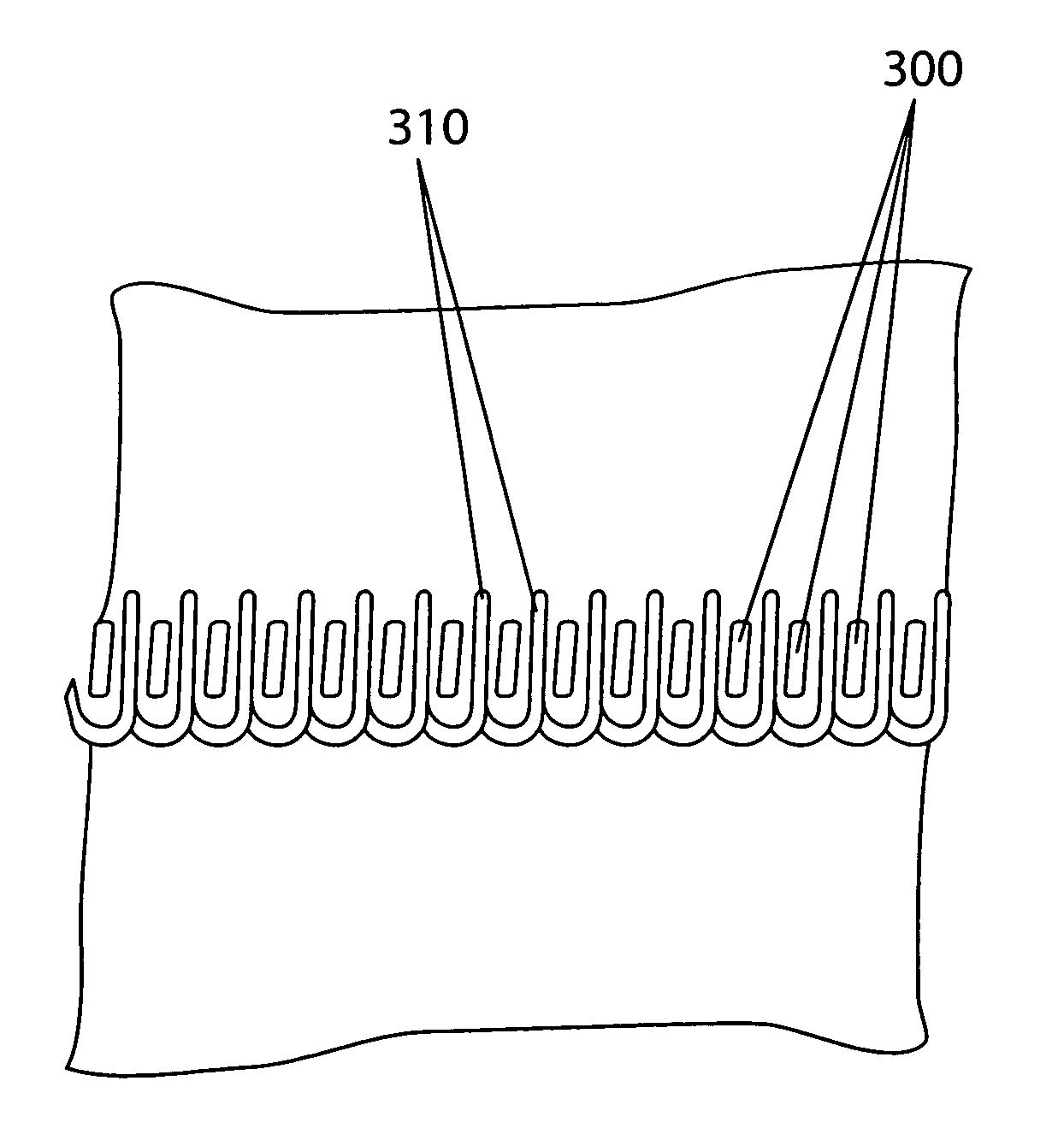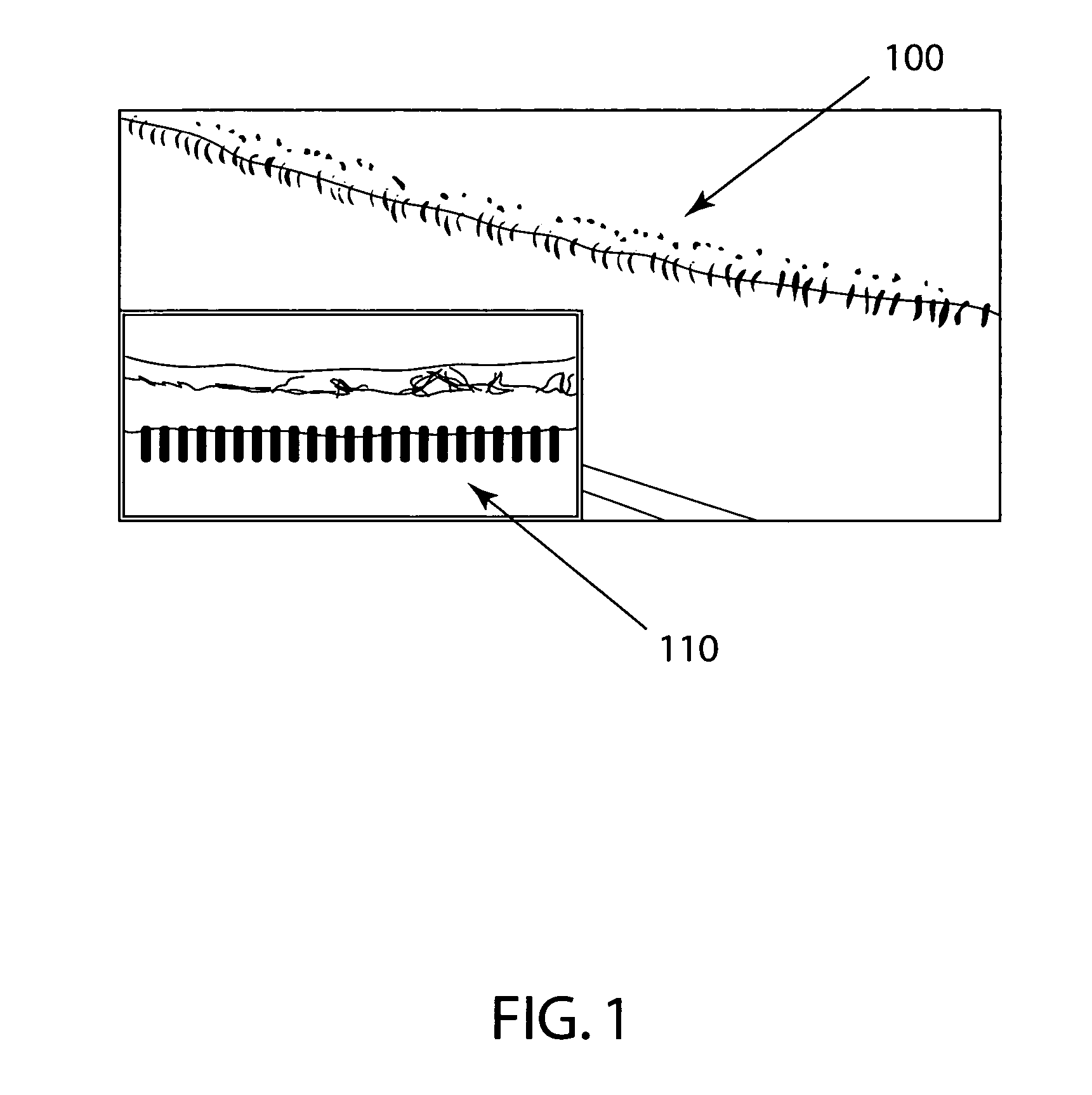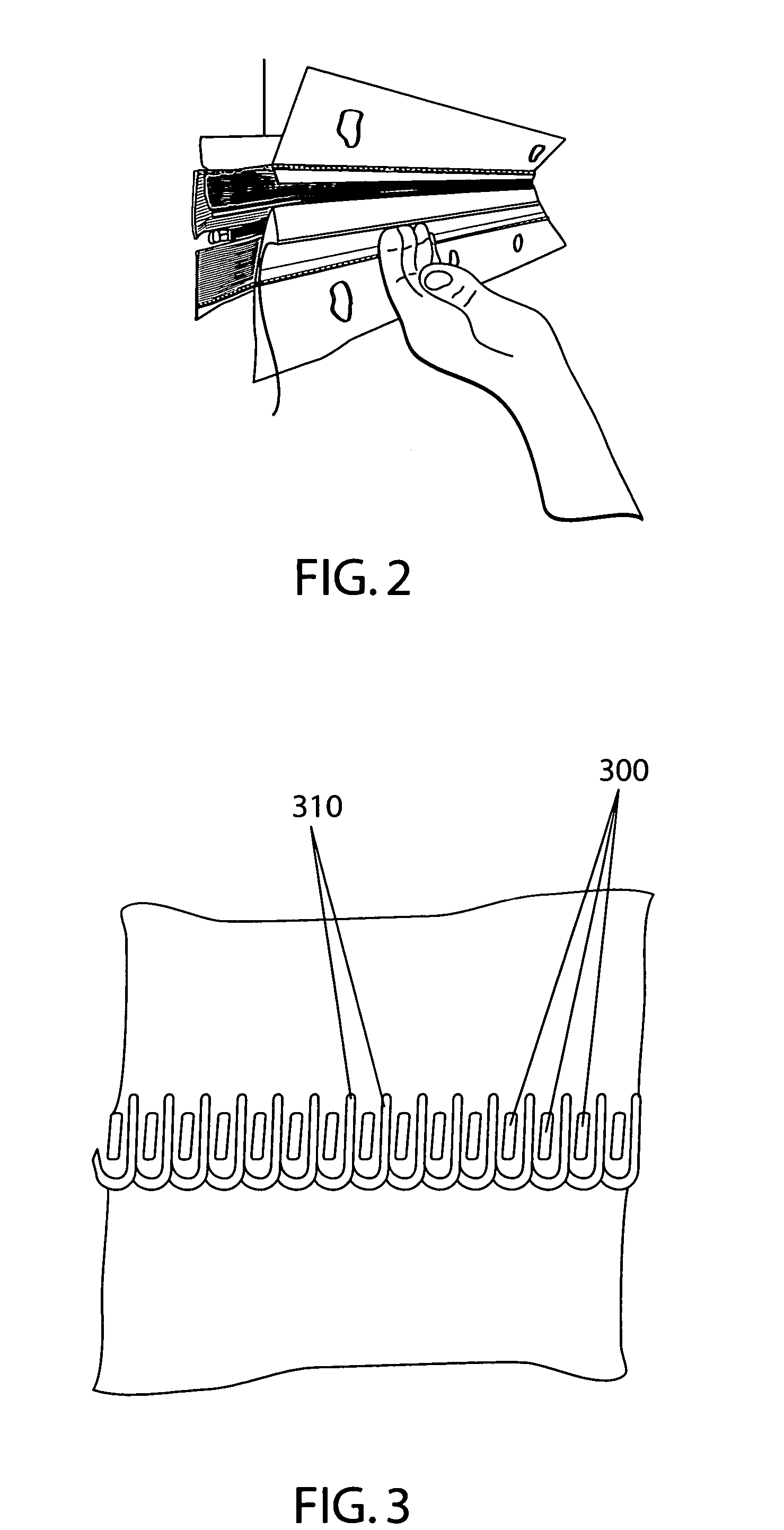Method and device for stabilizing unseamed loops
a technology of unseamed loops and stabilizers, which is applied in the field of papermaking arts, can solve the problems of affecting the quality of papermaking, and requiring regular replacement, so as to prevent torque imbalance and other forces, and facilitate connection and seaming
- Summary
- Abstract
- Description
- Claims
- Application Information
AI Technical Summary
Benefits of technology
Problems solved by technology
Method used
Image
Examples
Embodiment Construction
[0029]FIG. 1 is a view of an uninstalled fabric's seam loops 100 after storage for 20 months. Note the uneven alignment / orientation of the loops resulting from the forces inherent in the fabric distorting the loops over time. The inset in FIG. 1 is a view of a fabric sample having stabilized seam loops 110 stored for the same 20 month period. Although the fabric sample has the same inherent forces as the fabric, in this instance the fabric sample had its flap and no flap sides pinned together during the storage period. This pinning effectively eliminated any space for the loops to twist and distort their alignment. Hence, the loops were stabilized and have therefore maintained their alignment. However, it is not always practical or convenient to pin the flap and no flap sides of a fabric together to protect the loops.
[0030]The present invention essentially accomplishes an equivalent loop stabilization in a slightly different manner. Before shipment, the present device is inserted in...
PUM
| Property | Measurement | Unit |
|---|---|---|
| length | aaaaa | aaaaa |
| length | aaaaa | aaaaa |
| compressive forces | aaaaa | aaaaa |
Abstract
Description
Claims
Application Information
 Login to View More
Login to View More - R&D
- Intellectual Property
- Life Sciences
- Materials
- Tech Scout
- Unparalleled Data Quality
- Higher Quality Content
- 60% Fewer Hallucinations
Browse by: Latest US Patents, China's latest patents, Technical Efficacy Thesaurus, Application Domain, Technology Topic, Popular Technical Reports.
© 2025 PatSnap. All rights reserved.Legal|Privacy policy|Modern Slavery Act Transparency Statement|Sitemap|About US| Contact US: help@patsnap.com



